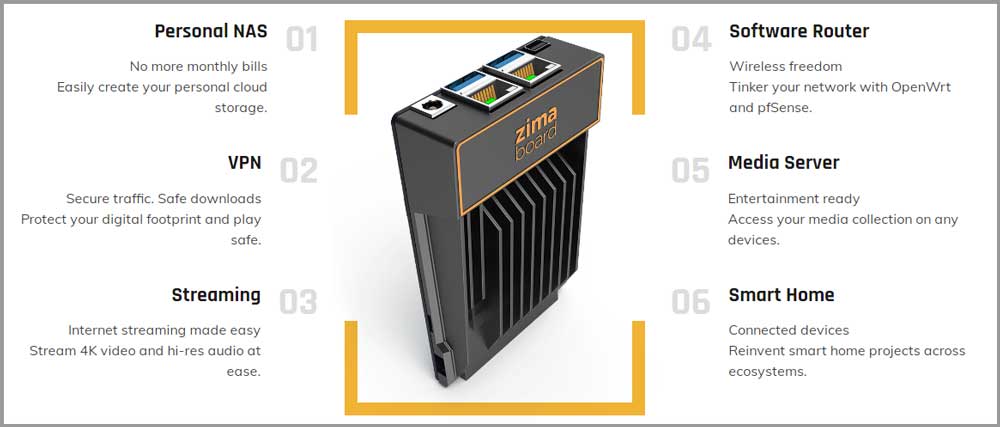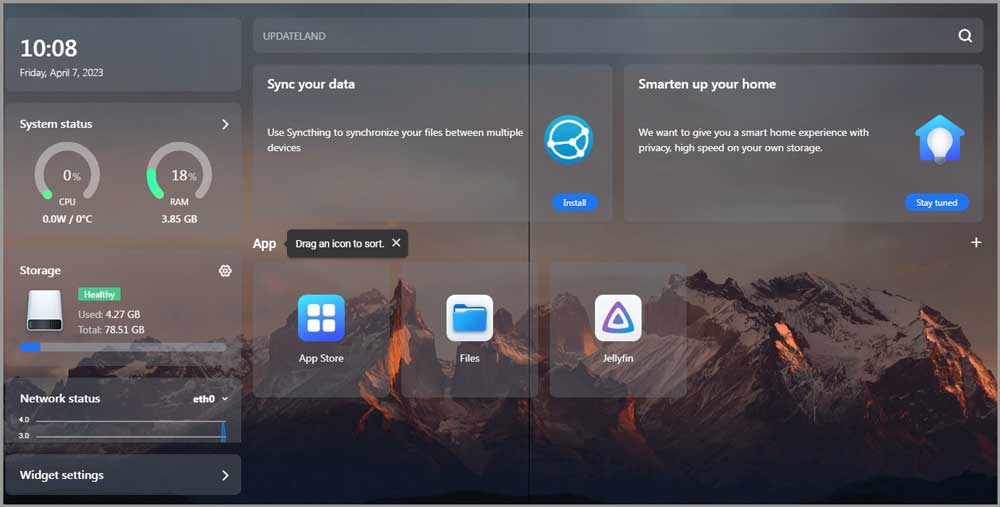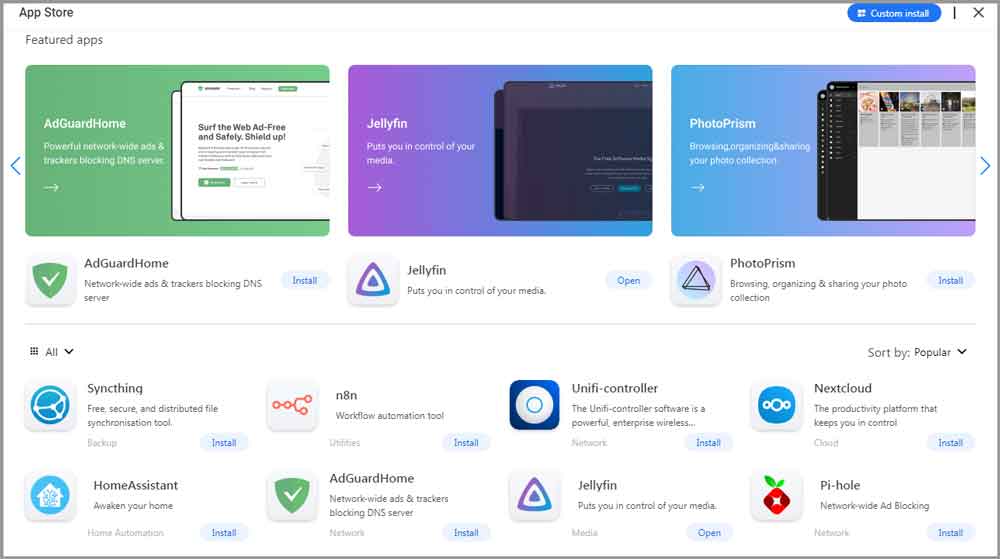If you need an all-in-one solution for your cloud storage, media streaming or even home Plex server, this review may just be for you.
The ZimaBoard is basically a tiny little PC that lets you do almost anything apart from gaming or editing the next Avengers movie.
The best part (for me) is its DIY aspect. You attach (or tear off) what you need and don’t need. Oh, and it looks pretty sleek too.
Let’s not waste time and get started?
Table of Contents
- How I’ve compiled this ZimaBoard DIY media server review?
- ZimaBoard 832 Single Board DIY media server- An overview
- World’s first “hackable” SBS
- Pre-installed CasaOS (Compatible with much more)
- 2 X SATA , 6.0 Gb/s
- 1x PCle 2.0 x4 port
- 2 X Ethernet ports
- 1X Mini-DisplayPort 1.2 4K @60Hz
- Really compact in size
- Hardware specifications
- 2 X LAN ports + 2 X 3.0 USB ports
- ZimaBoard 832 pricing
- ZimaBoard 832 review- Final verdict
How I’ve compiled this ZimaBoard DIY media server review?
If you’re to invest your time on this ZimaBoard 832 review, you should know if it’s worth your time, shouldn’t you?
Well, I’ll list all the primary things I look for in a DIY media server before I pick or reject them. If they sit right with you, this review is meant just for you.
- Hardware specs: Obviously, the first thing you look for when buying any hardware, is well, the hardware. You’ll need a CPU that fits your requirements (primarily media streaming/storage/ connectivity in this case), and enough RAM to handle the tasks you’re planning to throw at it.
- Expandability: I pay a lot of attention to expandability. In this review, you’ll learn how expandable the ZimaBoard 832 is in terms of storage/additional components and other features.
- Software: While most of you on this ZimaBoard 832 review are above-average tech genies, you’d still prefer an easy to use and understand UI/OS and enough compatibility with additional/third-party software. Wouldn’t you?
- Cost: Ah, I’m sure even if you’re Elon Musk (okay, maybe not Musk) the price-tag does influence your decision, specially when compared to the features being offered. Doesn’t it?
All in all, in the next few minutes, I’ll discuss all the primary aspects that you get with the ZimaBoard. Let’s get started then?
ZimaBoard 832 Single Board DIY media server- An overview
Before we start, here’s a sneak peek into everything that you get with the ZimaBoard Single Board Computer:
- Intel Celeron N3450 Quad Core 1.1-2.2GHz
- 8 GB RAM
- 2x SATA 6.0 Gb/s Ports for your drives
- 2x GbE LAN Ports
- 2x USB 3.0
- 1x PCle 2.0 4x
- 1x Mini-DisplayPort 1.2 4k@60Hz
- Pre-installed CasaOS (compatible with Linux/Windows/Android and other OS as well).
- Weighs just 278grams.
Let’s dive in then?
World’s first “hackable” SBS
The ZimaBoard markets itself as a Hackable Media Server. Well, unlike in most scenarios, it’s actually desirable for a SBS to be hackable, isn’t it?
In case the term puts you off, it just means “customizable” (to quite an extent).
The ZimaBoard is like dough and can be moulded to your exact requirements and specifications. Yes, it got ports, tons of them!
The website claims (because I haven’t verified “all” of these use-cases personally) its best used for the following purposes:
Of course, our job here is to ascertain how true these claims are. Let’s take a closer look at the ZimaBoard 832?
Pre-installed CasaOS (Compatible with much more)
The ZimaBoard comes pre-installed with CasaOS. It certainly has its highs and lows. On the brighter side, I loved the extremely modern, minimalistic UI.
CasaOS brings with itself tons of pre-installed apps and feature I find useful. There’s the file-manager (called “Files”), an app store you can download apps from, automation tools for IoT devices (HomeAssistant), and an easy to understand “settings” panel as well.
The App store pretty much solves any problems you may have.
Obviously, you’re free to install additional dockers if for some reason you don’t find what you’re looking for on the App store.
On the not so bright side, it doesn’t offer the customizations you may find with Windows or Linux (CasaOS is Debian based).
That brings me to the bright side of things again, because the board is based on x86 architecture, it’s compatible with most modern OS. Yes, you can even install Android, Libreelec or OpenWrt if you want to in addition to the obvious Linux and Windows.
2 X SATA , 6.0 Gb/s
Now, I personally am most interested in the free cloud storage part of things. Yes, I mean it’s a pain to pay for all the cloud storage that all my devices need.
With the 2X SATA ports, the ZimaBoard offers me literally unlimited storage. Are the two ports enough? Well, that would be a subjective choice, wouldn’t you agree? Some may argue they need atleast 4 of these but I’m content with just two.
1x PCle 2.0 x4 port
While the ZimaBoard doesn’t come with pre-installed graphic or network cards, it certainly is capable of handling them once installed.
To facilitate the same, the ZimaBoard offers a single PCIe 2.0 port. If done right, you can pretty much install any x4 compatible board to help expand the superpowers the ZimaBoard is offering you.
This is what offers ZimaBoard the expansion I was talking about earlier. You’re free to use the board how you want to and there’s absolutely no limit to what it’s capable of.
2 X Ethernet ports
You may want to set your internet up, access your files remotely or maybe just stream media. In either case, you’d need the Ethernet ports, won’t you?
Again, is 2 enough? For most people yes. Although I’m not one to judge if for some reason you want 50 on yours and aren’t happy with this.
1X Mini-DisplayPort 1.2 4K @60Hz
This is another factor that makes the ZimaBoard “hackable”. They could’ve just slapped a DVI, Thunderbolt or an HDMI port but they decided to give you the option, that’s why it’s DYI isn’t it?
The maximum compatibility is 4K @60Hz, so as long as you’re using the ZimaBoard for high-res media consumption, it’s golden. Of course, I wouldn’t suggest using it for games because you’d definitely want >60Hz for that, wouldn’t you? (The hardware isn’t pumped up for gaming anyway if I’m being honest).
Really compact in size
Does form-factor matter to you? It does to me. I wouldn’t get into the “looks” of the ZimaBoard 832 because everyone has their own opinion on exposed hardware.
However, I’m confident most of you on this ZimaBoard 832 review are into compact, hand-held, and basically small devices, aren’t you?
That’s one factor the ZimaBoard shines at. To be precise, it’s exactly 138.7mm wide, 81.4mm in depth and 34.9 mm in height.
That’s small, and if you compare this to typical NAS servers? It’s miniature, isn’t it?
Hardware specifications
These are the most basic pieces of information about the ZimaBoard 832. This is why I’m listing them towards the latter part of this ZimaBoard 832 review.
So, the 832 version of the ZimaBoard is packed with the Intel Celeron N3450 Quad Core 1.1-2.2GHz CPU. You get the same CPU with its 832 model as well.
This is the reason you aren’t playing the Elden Rings or even GTA V on your ZimaBoard anytime soon. Of course, that’s not why you’re buying it anyway.
It can be boosted up to 2.2Ghz and that’s more than you’ll ever need for your home media server or cloud storage.
Then, the “8” in the model number “832” stands for the 8gigs of RAM you get with it. Of course, the 432 model will get you 4 GB while the 216 model is armed with 2 GB of RAM.
Do note that the RAM isn’t upgradable in case you’re wondering.
As for the storage, the 8“32” model gets you 32 GB of storage. You get Intel HD Graphics 500 (200 MHz- 700 MHz).
2 X LAN ports + 2 X 3.0 USB ports
I wouldn’t insult your intelligence by explaining what these are or why these are important.
These are only being mentioned so you know what the ZimaBoard 832 will get you if you do decide to go with it.
Personally though, I’m happy. That’s a decent number of ports and connectivity, isn’t it?
ZimaBoard 832 pricing
The ZimaBoard 832 is priced at $199.90. That’s pretty cheap if you ask me compared to most other SBS with similar specs out there, wouldn’t you agree? In fact, “low cost” was one of ZimaBoard’s primary USPs to begin with.
Of course, the pricing would differ for the 216 or the 832 model for obvious reasons.
ZimaBoard 832 review- Final verdict
So, is it the best single board tiny PC you can get? That would be a very subjective answer. I personally do feel it does what it set out to do.
But then, you may not be comfortable with eMMC, the heat-sink or maybe even how it looks. It’s all about what your personal requirements are.
However, in a nutshell, can you use the ZimaBoard 832 as your personal NAS storage, VPN, media server or router? Without a doubt!
That’ll be all for now. I’d love to hear what your thoughts are on the SBC if you do decide to give it a try though.



